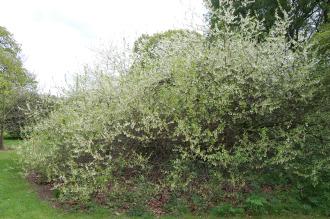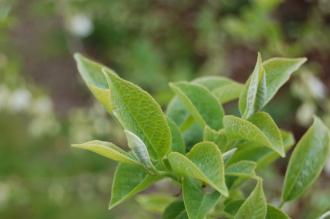
Halesia tetraptera (19/04/2014, Kew Gardens, London)
Position: Full sun to partial shade
Flowering period: Late spring
Soil: Moist, well drained, acidic
Eventual Height: 10m
Eventual Spread: 10m
Hardiness: 4b, 5a, 5b, 6a, 6b, 7a, 7b, 8a, 8b, 9a
Family: Styracaceae
Halesia tetraptera is a large shrub or small tree with a bushy, rounded habit. Its mid green leaves are elliptic to ovate with fine serrulate margins, up to 12cm long and 6cm broad. Its leaves turn yellow/ green in autumn before they fall. Its white flowers are bell shaped, up to 2cm long and appear in clusters of up to 5. Its nut like oblong fruit is four winged, initially green, maturing to tan, up to 5cm long and persists on the plant during the winter months.

Halesia tetraptera Flower (19/04/2014, Kew Gardens, London)
Halesia tetraptera, commonly known as Common Silverbell or Carolina Silverbell, is native to south east USA. In its native habitat it grows as an understory tree, often along streams. Halesia tetraptera is synonymous with Halesia carolina.
The etymological root of the binomial name Halesia is named after Rev. Dr Stephen Hales (1677-1761). Tetraptera is derived from the Greek tetra meaning ‘four’ and pteron ‘wings’, in reference to the seed pods.
The landscape architect may find Halesia tetraptera useful as an attractive spring flowering large shrub for acid soils.

Halesia tetraptera Leaf (19/04/2014, Kew Gardens, London)
Ecologically, Halesia tetraptera flowers are attractive to pollinating insects.
Halesia tetraptera prefers moist, organic rich, well-drained soils. It prefers an acid pH of soil.
Halesia tetraptera requires little maintenance.

